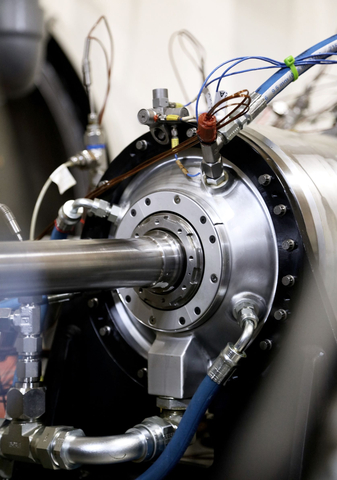GE First in World to Test High Power, High Voltage Hybrid Electric Components in Altitude Conditions
- Major milestone toward hybrid electric flight for commercial passenger air travel
- World’s first megawatt-class (high power) and multi-kilovolt (high voltage) hybrid electric system tested in altitude conditions
- Altitude integration test completed at NASA’s NEAT facility
- One MW could power more than 600 houses*

The test of the high power, high voltage system — including electric motor/generators, power converters, power transmission and power control systems — successfully demonstrated performance and operation of the components in a replicated flight environment. This helps validate the architecture of the hybrid electric propulsion systems
The altitude integration test of the system began in
“We’re making aviation history by developing the technology to help make hybrid electric flight possible for everyday commercial air travel,” said Mohamed Ali, vice president and general manager of engineering for
“GE is proud to be a longstanding partner with NASA for development of new aviation technologies. Together, we just passed a key milestone by successfully concluding the world’s first test of a high power, high voltage hybrid electric system at altitude conditions. We appreciate the collaboration to make this possible. This is one of many milestones in our journey with NASA towards demonstrating a hybrid electric aircraft engine system for a more sustainable future of flight,” Ali said.
The NEAT facility where testing took place is a NASA reconfigurable testbed used to design, develop, assemble and test electric aircraft power systems.
“NASA’s unique NEAT facility is the only testing location capable of simultaneously providing both high-electric power and high-altitude conditions in an area large enough to fit an entire electric powertrain, and we are proud to see this test with
“At NEAT, we are able to test a high-voltage powertrain system in flight altitude conditions without leaving the ground, thereby reducing major safety risks in a timely manner. With the ground testing completed, we are now well positioned to move to the next phase of our agreement with
About the altitude integration test
Components were tested independently and as an integrated system. Additionally, multiple operational modes were evaluated, including power transfer from side to side, power assist to a simulated engine, and aircraft power generation. The implementation of energy storage was also simulated.
MWs measure electrical power and kVs measure the difference in electrical potential between two points, equivalent to the pressure used to drive fluid through a pipe. A kV-class system enables high efficiency and specific power. Successfully testing a kV system in altitude conditions is significant because the interaction of voltage and the environment is different at higher altitudes than on the ground. kV-class systems are significantly more difficult to manage at altitude.
What’s next for hybrid electric flight
Future tests will continue as part of the Electrified Powertrain Flight Demonstration (EPFD) project that was announced by NASA in
Boeing is partnering with
More information on how
Hybrid electric propulsion technologies can help reduce fuel usage, reduce CO2 emissions and optimize engine performance. Electrification technologies being developed by
*Calculated based on average annual electricity consumption for residential customers in the
ABOUT
View source version on businesswire.com: https://www.businesswire.com/news/home/20220719005415/en/
513-720-6458
chelsey.levingston@ge.com
440-433-5644 (office)
216-469-9726 (mobile)
brian.t.newbacher@nasa.gov
Source:







